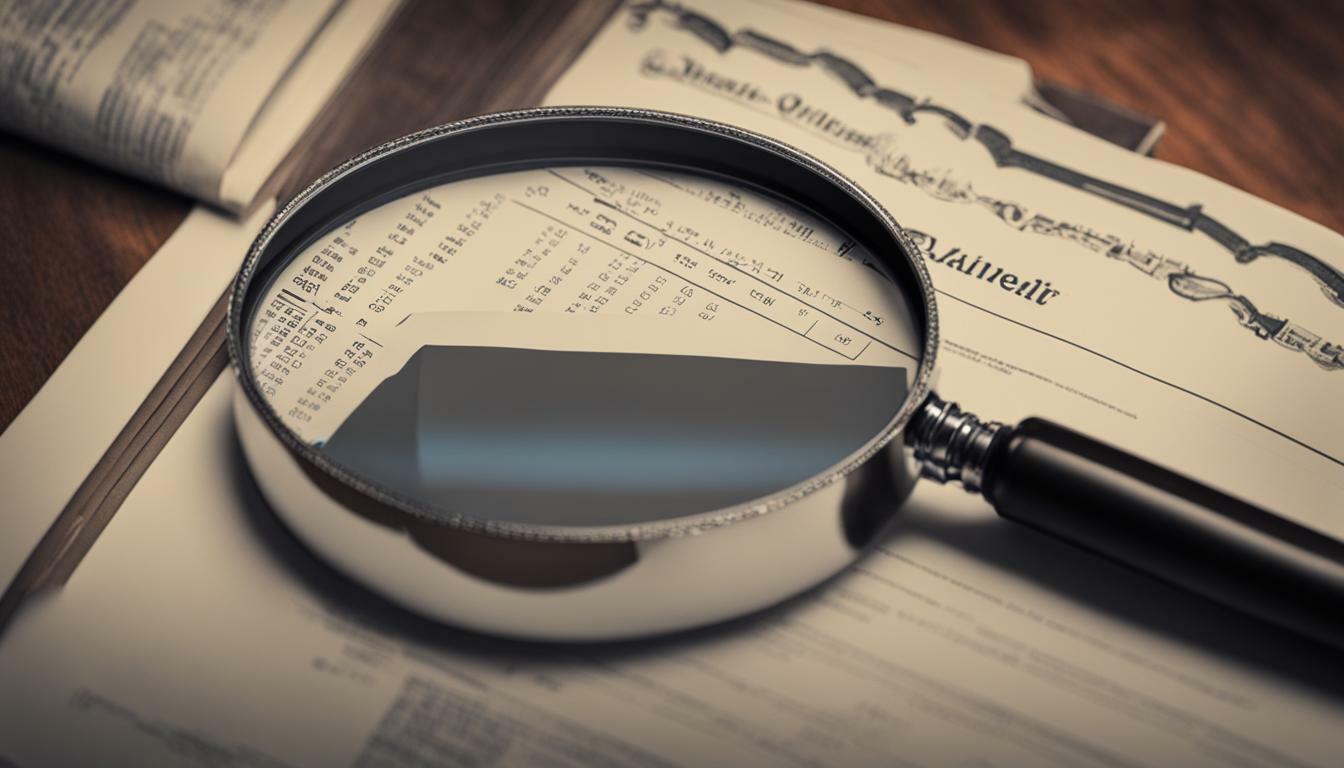Have you ever wondered if a human or an AI language model wrote that impressive writing before you?
With the increasing use of AI in content creation, it’s becoming harder to distinguish between the two.
Luckily, methods and tools are available to help you verify whether something was written with AI. In this section, we will introduce you to the topic of checking if something was written with AI, focusing specifically on the popular AI language model called ChatGPT. We will explore different tools and techniques to help you detect AI-generated content and verify its authenticity.
Key Takeaways:
- AI-generated content is becoming more prevalent, making it harder to distinguish written by humans from written content by machines.
- Various tools and techniques are available to detect AI-generated content and verify its authenticity.
- Understanding the importance of verifying AI-generated content in today’s digital landscape.
Why is it important to check if something was written with AI?
So, you’ve come across something that seems too good to be true – a fantastic article, a top-notch essay, or an engaging social media post. But wait, did a human write it? With the rise of AI language models like ChatGPT, it’s becoming increasingly difficult to distinguish between human and machine-generated content. That’s why verifying content authenticity is crucial.
AI-generated content verification has become a necessity in today’s digital world. The risks associated with artificial intelligence can be immense, and ensuring that the content we consume is valid and trustworthy is essential. With AI content validation, you can be sure that a human, not an algorithm, wrote the text you’re reading.
Tools and techniques to detect AI-generated content
Now that you know that AI-generated content is out there, you may wonder how to detect it. Luckily, there are some great tools and techniques available that can make the job easier.
AI Content Checkers
One of the most straightforward ways to detect AI-generated content is to use an AI content checker. These tools can quickly analyze a piece of writing and determine whether it was written by a human or a machine. Some popular AI content checkers include ChatGPT, Copyscape, and Grammarly.
AI Plagiarism Detection
If you suspect AI may have generated a piece of writing, you can also use AI plagiarism detection tools. These tools can compare a piece of content to a massive database of other content and let you know if there are any matches. Some great AI plagiarism detection tools include Turnitin and Quetext.
AI Text Analysis
Another valuable technique for detecting AI-generated content is using AI text analysis. This involves analyzing a piece of content’s structure, writing style, word choice, and other factors to determine if a machine created it. Some popular tools for AI text analysis include IBM Watson Natural Language Understanding and Google Cloud Natural Language API.
Using these tools and techniques, you can easily detect if AI created a piece of writing. Remember that while technology has come a long way, these tools are not foolproof. However, they can give you a good idea of whether or not a piece of writing is genuine.
Signs of AI-generated writing
Are you ready to become an AI-detecting pro?
Let’s dive into the signs that indicate if AI wrote something. Keep your eyes peeled for these telltale patterns:
- Repetitive content: AI-generated content can often be repetitive, regurgitating the same ideas or phrases multiple times within a piece of writing. If you notice a significant amount of repetition, it may be a sign that the content was produced with AI.
- Unnatural language: AI language models may produce sentences that sound unnatural or are structured differently from human writing. If the writing seems stiff or robotic, it could be a sign that AI-generated it.
- Incoherent writing: While AI models have improved significantly, they may still produce structurally incoherent or illogical writing. If the writing seems to jump from topic to topic or doesn’t flow logically, it may be a sign that it was generated with AI.
- Inconsistent tone: AI models can struggle to maintain a consistent tone throughout the writing. If you notice tone or writing style changes within a piece, it may be a sign that it was generated with AI.
Don’t be fooled by AI-generated writing! Look for these signs and become an expert in identifying AI-generated content.
Limitations of AI Content Detection
So, do you think you can outsmart an AI content detector?
Well, not so fast!
As much as we rely on AI technology, it’s not a foolproof method for detecting AI-generated writing.
For instance, AI language models generate text by analyzing vast amounts of data, including books, articles, and online content. Therefore, even if you input an entirely original piece of writing, the AI model may have already encountered similar language patterns and will generate what appears to be a human-written piece.
Moreover, some AI language models can mimic human writing styles so accurately that it’s challenging to differentiate between AI-generated and human-written content, making it increasingly tricky to detect AI-generated writing.
That said, AI detection tools can be a valuable resource for verifying content authenticity. Still, it’s best to combine AI detection with human verification to ensure the most accurate results.
So, the next time you come across a dubious piece of content, don’t rely solely on AI detection. Instead, brace your inner detective and use all the tools to detect AI-generated writing.
Stay curious and keep honing your AI-detecting skills to stay ahead of the game. Together, we can keep content authenticity in check!
Best practices for content verification
Congratulations, you’ve made it to the section where we reveal the best practices for verifying if something was written with AI. As you know, AI-generated content is becoming increasingly common, which means ensuring content authenticity’s becoming more critical. Here are some tips to help you verify AI-written content:
- Use multiple detection tools: While several AI content detection tools are available, don’t rely on just one. Use various tools to validate the content.
- Compare the content: The suspected AI-generated content with other content from the same source or author. If the writing styles are vastly different, it could be a sign that AI generates the content.
- Examine the structure: Pay attention to the structure of the content. AI-generated content often has a formulaic structure and may not include a natural flow of ideas.
- Be skeptical: When in doubt, be wary. Question the authenticity of the content and investigate further before publishing or sharing it.
By following these best practices, you can verify if something was written with AI and ensure content authenticity. When you verify content, you protect your reputation and provide reliable information to your audience.
“Don’t be fooled by AI-generated content. With the right tools and techniques, you can easily verify the authenticity of the writing.”
The importance of AI-generated content authenticity
Hey, you savvy content creator! Are you aware of the significance of AI-generated content authenticity? Let’s explore some industries where ensuring content validation and verification is crucial.
In news reporting, maintaining authenticity is vital in building trust with your audience. Imagine if an AI-generated article on a sensitive topic were to be published without proper validation checks. The repercussions could be devastating.
The same holds for the academic world. AI text synthesis may seem like a shortcut to academic success, but it could lead to serious plagiarism allegations without proper verification. As an academic, you know how crucial it is to provide original work, and artificial intelligence cannot replace the authenticity of your knowledge and expertise.
But it’s not just in these industries where AI-generated content authenticity is essential. In a world where deepfakes and disinformation are becoming increasingly prevalent, verifying the authenticity of all types of content has become a necessity.
So, what can you do? Stay vigilant, utilize available tools and techniques, and always prioritize content validation and verification. Remember, authenticity is the foundation of trust, and trust is the foundation of success!
Embrace your curiosity – Become an AI-detecting pro today
Well, well, well, look who’s eager to become an AI-detecting pro! You’re a curious cat, and that’s precisely the attitude you need to excel in this field.
First, you need to understand the importance of AI content verification. Becoming an expert in identifying AI-generated content is essential to ensure content authenticity and avoid the potential risks associated with AI-generated writing.
Don’t worry; we’ve got your back. Here are some tips and resources to help you become an AI-detecting pro:
Stay informed
It is crucial to stay current with the latest developments in AI-generated content. To stay in the loop, follow industry leaders, read relevant articles, and join online communities.
Utilize AI detection tools.
While AI detection tools may not be foolproof, they can still help identify AI-generated content. Use them in conjunction with other methods to enhance your detection skills.
Develop your own AI detection methods.
As you gain more experience in detecting AI-generated content, you’ll develop your own methods. Keep refining these methods and experimenting with new techniques to stay ahead of the curve.
Collaborate with others
Collaborating with others in the industry can be incredibly valuable. Share your knowledge, learn from others, and work together to advance your AI-detecting skills.
Remember, becoming an AI-detecting pro takes time and effort. But with the right attitude and resources, you can do it. So, go ahead, embrace your curiosity, and become an AI-detecting pro today!


![15 Best Affiliate Recruitment Software Tools [2025 Update] - 15 Best Affiliate Recruitment Software Tools [2025 Update] -](https://www.toptut.com/wp-content/uploads/2024/01/affiliate-recruitment-software-1.png)






Comments 1
Comments are closed.